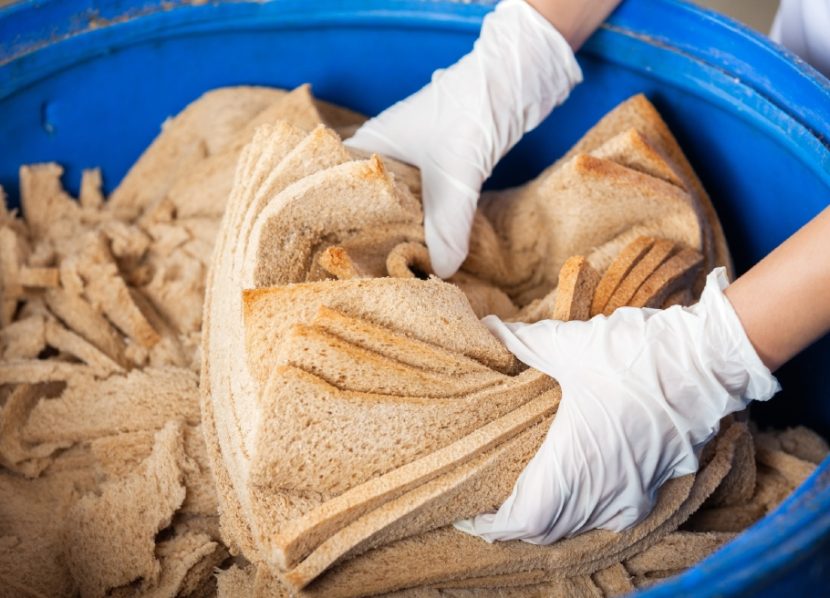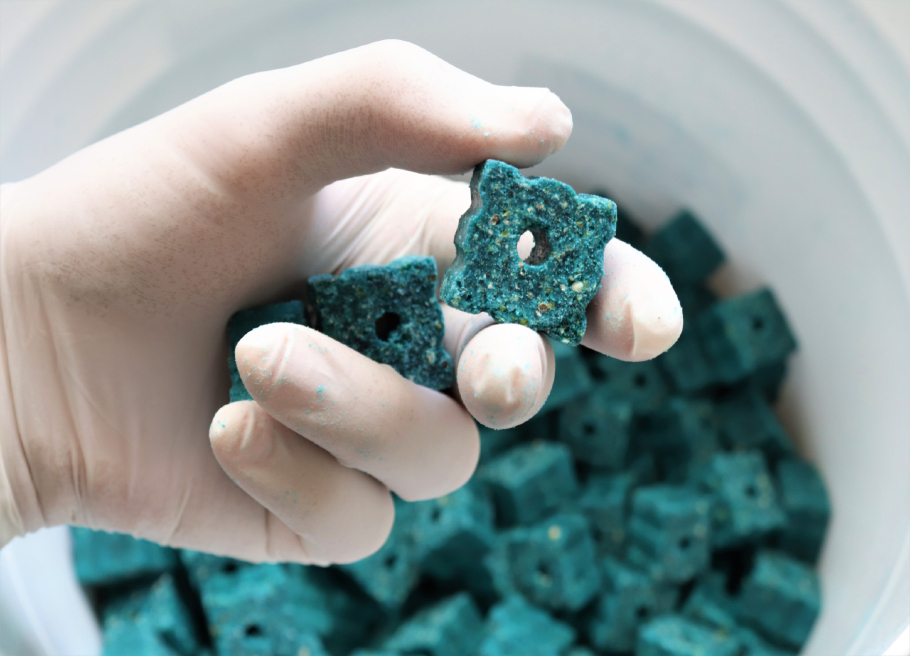Innovating Against Waste: Using Technology to Reduce Food Waste
Content Produced by GFSR
Food waste is a paradox of our times: while millions go hungry, vast amounts of food are lost or wasted across the supply chain—from farms to kitchens. The advent of technology, however, offers a glimmer of hope. From digital platforms to biotechnological advancements, we are now better equipped than ever to tackle this issue head-on. These technologies have the potential not only to save resources and reduce emissions but also to redefine our relationship with food, making our consumption patterns more sustainable for the planet and future generations.
Wasted food is not just a loss of nourishment but also a waste of resources—including water, land, energy, labor, and capital—used in its production.
The Scale of Food Waste and Its Impacts
Despite the growing awareness of the need for food security, substantial amounts of food are wasted at every stage of the supply chain — from production and processing to retail and consumption. The United Nations Food and Agriculture Organization (FAO) estimates that approximately one-third of all food produced for human consumption is lost or wasted globally. his staggering amount of waste occurs globally across various stages of the food supply chain.
The environmental impact of food waste is profound. Wasted food is not just a loss of nourishment but also a waste of resources—including water, land, energy, labour, and capital—used in its production. Moreover, when food waste ends up in landfills, it decomposes anaerobically, releasing methane, a potent greenhouse gas contributing to climate change. The carbon footprint of global food waste is estimated to be equivalent to the GHG emissions of all road transportation in the USA. Additionally, wasted food contributes to unnecessary water usage, with the volume of water used to produce lost or wasted food rivaling the water flow of the Volga River, Europe’s largest river.
Economically, the cost of food waste is enormous, amounting to approximately 931 million tonnes of food going to waste per year globally. This economic loss is felt throughout the food supply chain, from farmers who bear the cost of unsold produce to consumers who buy more food than needed. On a social level, food waste represents a missed opportunity to address hunger and food insecurity.
“Global food systems are broken – and billions of people are paying the price,” said UN Secretary-General Antonio Guterres at the UN Food Systems Summit +2 Stocktaking Moment in July 2023. “It is outrageous that people continue to suffer and die from hunger.”
The scale and impact of food waste highlights the urgent need for innovative solutions. Technology offers a pathway to reduce food waste significantly through prevention, recovery, and recycling. By leveraging advancements in digital apps for food sharing, preservation technologies, and supply chain management, we can mitigate the environmental and economic costs of food waste and make strides toward a more equitable food system.
Understanding the magnitude of food waste and its consequences sets the stage for exploring how technology can play a pivotal role in reducing waste and enhancing sustainability.
Mobile Applications Tackling Food Surplus
In the digital age, technology connects surplus food with those who can use it, thanks to the advent of mobile applications designed to combat food waste. By directly connecting consumers, restaurants, supermarkets, and food producers, these apps are making significant strides in reducing food waste at the consumer and retail levels.
For instance, apps like “Too Good To Go“ allow users to purchase surplus food from restaurants, bakeries, and grocery stores at a reduced price. Similarly, “Olio” connects neighbours and local businesses so they can share surplus food instead of discarding it. These platforms prevent edible food from ending up in landfills and offer consumers an opportunity to save money and discover new local eateries and products. Some apps also include features for users to donate food directly to food banks or charities, further extending the reach of their impact.
The impact of these mobile applications is significant and growing. For example, “Too Good To Go” reports saving millions of meals from going to waste across numerous countries, demonstrating the global scalability of such solutions. “Olio” has facilitated the sharing of millions of food items among community members, fostering a sense of community while combating food waste. These successes highlight the potential for technology to make a tangible difference in reducing food waste on a large scale.
Despite their success, these apps face challenges, including low user engagement, expanding the number of participating businesses, and ensuring the quality and safety of shared food. There is also the challenge of making the technology accessible to those in less developed regions where food waste is a critical issue, but smartphone penetration is lower. But by continuing to innovate and adapt, mobile applications can play a crucial role in the global effort to reduce food waste.
Advanced Preservation Technologies
Innovations in food preservation are essential in the quest to reduce food waste, extend the shelf life of perishable items, and ensure high quality for longer periods. Technological advances have led to the development of novel preservation methods, ranging from sophisticated packaging solutions to innovative storage techniques.
- Intelligent Packaging Solutions: These solutions involve using materials that can respond to changes in the environment or the condition of the food itself. For example, packaging that can absorb excess oxygen or moisture can significantly extend the shelf life of perishable goods. Similarly, indicators that change colour when a product is nearing its expiry date help consumers make better decisions about food consumption, thus reducing waste.
- Modified Atmosphere Packaging (MAP): Modified atmosphere packaging (MAP) alters the composition of the air inside a food package. By reducing the amount of oxygen and increasing levels of other gases like nitrogen or carbon dioxide, MAP can slow down the spoilage process. This technology is particularly effective for fresh produce, meats, and dairy products.
- Atmospheric Control: Controlled atmosphere storage involves regulating the composition of air in storage facilities and is used for bulk storage of fruits and vegetables, significantly reducing post-harvest losses.
- Cooling and Freezing Technologies: Rapid cooling and blast freezing can lock in freshness, extending the shelf life of foods without sacrificing quality. Methods such as vacuum cooling and cryogenic freezing use less energy and are more efficient than traditional methods, making them both environmentally and economically advantageous.
- Ultrasonic and High-Pressure Processing: Emerging technologies like ultrasonic processing and high-pressure processing (HPP) offer non-thermal alternatives to conventional food preservation methods. These techniques can destroy pathogens and spoilage organisms while preserving the food’s nutrients, flavour, and texture. Such methods are particularly useful for juices, sauces, and other liquid products, providing an extended shelf life without the need for preservatives or refrigeration.
Despite their potential, these advanced preservation technologies face challenges in terms of cost, scalability, and consumer acceptance. The initial investment for businesses can be high, and there is a need for regulatory approval for certain technologies. However, governments worldwide are beginning to recognize the importance of addressing food waste, leading to stronger support and incentives. These incentives range from financial support for businesses implementing food waste reduction strategies to funding for research into new technologies and regulations that facilitate food donation.
Food Waste and Emerging Technologies
Emerging technologies such as artificial intelligence (AI), the Internet of Things (IoT), and blockchain are set to play pivotal roles in the future of food waste reduction. AI and machine learning can enhance predictive analytics for demand forecasting and inventory management, making food distribution systems more efficient. IoT devices can provide real-time monitoring of food storage conditions, reducing spoilage during transportation and storage. Blockchain technology offers a transparent and secure way to track food products through the supply chain, ensuring accountability and reducing losses.
- Predictive Analytics for Demand Forecasting: By analyzing historical sales data, weather patterns, and consumer behaviour trends, predictive analytics can help retailers and restaurants accurately forecast product demand. This reduces the likelihood of overordering or overproducing food that cannot be sold, thereby minimizing waste.
- Real-Time Inventory Management: These systems can alert businesses when products are nearing expiration, allowing for strategic promotions or donations to reduce waste. RFID (Radio-Frequency Identification) technology and IoT sensors can track food products through the supply chain, providing valuable data for optimizing inventory levels.
- Supply Chain Optimization: Businesses can identify inefficiencies and implement changes that reduce food spoilage and waste by analyzing transportation routes, storage conditions, and consumption patterns. For example, rerouting deliveries to avoid delays can ensure perishable goods reach their destination in optimal condition.
The fight against food waste is not just about technology; it’s about changing the way we think about and interact with food. It’s about valuing the resources that go into producing our food and recognizing the social and environmental implications of our daily choices.
The journey is complex and requires collaboration, innovation, and persistence, but the rewards—a sustainable food system and a healthier planet—are well worth the effort.

-
 FeaturedRisk management
The Cost of a Breach: What a Cyberattack Could Mean for Food Safety Recalls
FeaturedRisk management
The Cost of a Breach: What a Cyberattack Could Mean for Food Safety Recalls
-
 FeaturedRisk management
Securing the Food Chain: How ISO/IEC 27001 Strengthens Cybersecurity
FeaturedRisk management
Securing the Food Chain: How ISO/IEC 27001 Strengthens Cybersecurity
-
 FeaturedRisk management
Revolutionizing Food Safety Training: Breaking Out of the “Check-the-Box” Mentality
FeaturedRisk management
Revolutionizing Food Safety Training: Breaking Out of the “Check-the-Box” Mentality
-
 GFSI Standards
GFSI 2025: Building Trust, Tech-Forward Solutions, and Global Unity in Food Safety
GFSI Standards
GFSI 2025: Building Trust, Tech-Forward Solutions, and Global Unity in Food Safety
-
 FeaturedFood Safety
Integrated Pest Management: Strategies to Protect Your Brand’s Reputation
FeaturedFood Safety
Integrated Pest Management: Strategies to Protect Your Brand’s Reputation
-
 FeaturedFood Safety Culture & Training
No Open Door Policy: Challenges That Impact Pest Control in Food Processing Plants
FeaturedFood Safety Culture & Training
No Open Door Policy: Challenges That Impact Pest Control in Food Processing Plants




